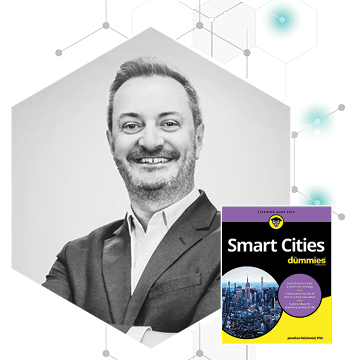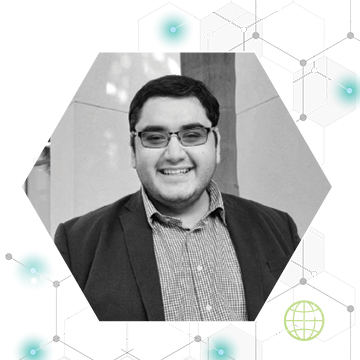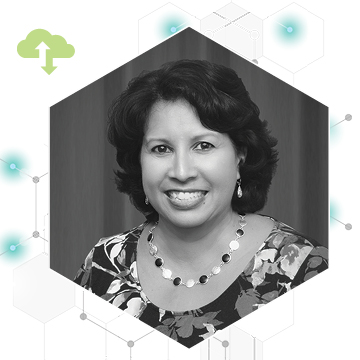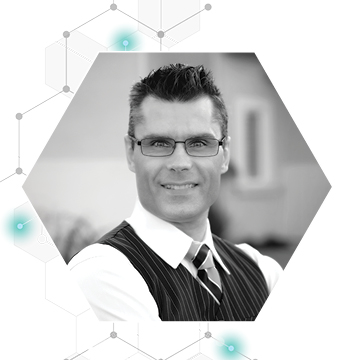Tech and the City
Pepperdine experts offer their thoughts on how technology can—and can’t—improve the urban experience
As we increasingly rely on technology to manage so much of our daily lives, it’s easier than ever to imagine our hometown as a smart e-topia. The smart city movement—a metropolis’s efforts to improve operational efficiency, share information, and achieve strategic outcomes through information and communication technology— is in full swing. It touches upon every aspect of urban living, including healthcare, education, entertainment, recreation, industry, jobs, climate, transit, housing, and open space, to name a few.

Jonathan Reichental, author of Smart Cities for Dummies and adjunct faculty member and designer of the Leading Smart Communities program at the Davenport Institute for Public Engagement and Leadership, notes that every city has its own culture and priorities. Thus, the efforts of one city may not be appropriate for another. Common threads, however, are fast and reliable internet service and effective telecommunications at the municipal level.
“What’s important to São Paulo, Brazil, is different from what’s important to Melbourne, Australia,” he says. “Probably the most important aspect of building a smart city for every community in the world is connectivity— ensuring that everybody can have access to good quality internet.”
As the chief information officer for the City of Palo Alto from 2011 to 2018, Reichental elevated the city’s technological services to a new level. He oversaw more than 250 technology projects, implementing a website that allowed citizens to file complaints, creating an open database displaying city finances and building permits, and establishing free WiFi at all public facilities. During his tenure, Palo Alto was heralded as one of the country’s top five digital cities for four consecutive years.
The need for the strong digital infrastructure and reliable internet service that Reichental fulfilled became all the more crucial during the pandemic as cities’ internet deserts became an apparent inequity earning the attention of service providers and city leaders.
“No one realized how important being connected was to getting an education and to accessing healthcare,” Reichental says.

For example, the City of Los Angeles partnered with a public benefit foundation, a nonprofit organization, and the Los Angeles Unified School District to ensure that city residents could locate affordable internet service and access computers. Activists seeking to enhance internet access citywide in Cleveland, Ohio, obtained city funding for community internet projects. The local government in Austin, Texas, furthered its work of providing internet access to those living in low-income areas.
The pandemic also gave rise to a significant upgrade to the digital environment in Henderson, Nevada. Leading a community made up largely of seniors, Joseph Chidiac (MPP ’19), Henderson’s long-range planner for community development, and his colleagues were particularly wary of moving away from analog interactions. Online services have refined much of the city’s transactions, but city employees do not insist that citizens use online tools.
“That’s a catch-22 for us,” Chidiac says, “as many in our community aren’t as knowledgeable or proficient in certain technologies. They have the option of doing things on paper if that is more comfortable for them.”
If they want, however, residents seeking to build an addition to their home can file their request online and obtain approval for it much more rapidly. A new portal to the city’s updated development code allows developers and other individuals to quickly identify all the specifications for a particular building project, such as how many parking spaces they need to provide for their commercial enterprise. The upgrades have made a marked difference in how residents interact with and feel about their local government.
“We’ve had nothing but positive comments about the changes we’ve made,” says Chidiac. “They’re very user-friendly, and you can quickly search almost anything.”
This type of good customer service goes far in creating brand loyalty for businesses but also works for local governments, notes Charla Griffy-Brown, Graziadio’s senior associate dean of executive and part-time programs and professor of information systems technology management.
“Thinking through digital processes in terms of ‘customer’ engagement is what we like to experience as citizens,” she says.
Fast and reliable connectivity doesn’t just benefit a metropolis’s transactions. Reichental relates that Chattanooga, Tennessee, had found itself a city adrift. At one time a manufacturing hub, the city’s economy floundered with the loss of factories and jobs. Partnering with the local city-owned utility, the city invested in the expansion of its network to offer the fastest internet service in the country in 2010. As the only utility in the area, the provider serves every home and business in Chattanooga, and a few years ago, it had created America’s most comprehensive fiber network. Along with a low cost of living compared with other US cities, the high-speed internet has attracted new industry, new tech companies, and conferences and conventions.
“Over the past decade, people have started moving to Chattanooga for the quality of life and the new career opportunities,” says Reichental. “Chattanooga demonstrates the relationship between very fast, low-cost internet and economic advancement. It has been a game changer.”

Connectivity is also critically important to people experiencing homelessness, advises Griffy- Brown, who has worked with the unhoused community in Seattle, Washington. With a charged cell phone and access to WiFi, a person who is homeless is better able to locate essential services such as the address and hours of food banks and shelters. They can find local transit routes and stops, which makes it possible to get to healthcare clinics and libraries, the latter of which provides them with computers to assist in job hunting, completing forms for government services, and the like.
“The information and internet access public libraries provide are a huge part of the life of a homeless person who’s really trying to escape homelessness,” notes Griffy-Brown, “But you’re not going to solve homelessness with digital architecture.”
Thinking through digital processes in terms of “customer ” engagement is
what we like to experience as citizens.—Charla Griffy-Brown
Americans generally agree that homelessness is an urgent problem, and Reichental cites the creation of innovation districts in some US cities as efforts to mitigate it through revitalization. Often developed in areas that were once the home of industry, innovation districts seek to attract new businesses, startups, universities, and hotels, thereby creating new economic opportunities.
He points to the dramatic efforts initiated in Aurora, Illinois, where the city’s chief information officer decided to turn the entirety of the city into an innovation district. The project includes expansion of the city’s fiber network, which has attracted skillful business partners and, perhaps most importantly, the trust and support of the entire city government.
“Aurora is a great example of a smart American city that is working to bring more prosperity to more people and reduce homelessness,” Reichental says.
Cities around the world report record numbers of unhoused residents, and some urban areas outside the US have taken the dramatic steps needed to alleviate it. An uplifting example Reichental offered was the prioritization of eliminating homelessness in Helsinki, Finland. Beginning in 2008, the government adopted a “housing first” policy, which, rather than providing short-term shelter for people experiencing homelessness, placed them in permanent housing. The government provides housing by supporting an NGO that buys and builds it and hires social workers to assist the residents with financial and other issues. In Helsinki, the number of unhoused individuals dropped substantially. What we seem to find an unsolvable problem is actually solvable. “The city took an all-hands-on-deck approach,” Reichental points out. “Leadership made it a priority.”
As noted earlier, what is most important to each city will differ, and solutions to a given concern will vary from one city to the next. Fast, convenient, and sustainable transportation is a need that most of today’s cities share. In Henderson, Chidiac and his office are using GIS technology to locate areas where transportation services are lacking. The specificity of the data is invaluable.
“It’s useful in addressing both particular issues and in making broader policy changes,” he says. Many readers of this magazine will know that the journey from one place to the next in Los Angeles falls outside its “great place to live” factors. Los Angeles actually takes fifth place in the worst traffic competition in the US, and the occasional added lane on the freeway seems unlikely to move the city into the sixth-place slot.
“Over the last 100 years, we have built our cities for cars with parking lots with thousands of spaces,” says Reichental. But today’s smart city is reevaluating the value of the auto to both the individual and the larger community. As of January 1, 2023, developers in California cities no longer have to provide a minimum number of parking spaces for residential buildings situated within one-half mile of public transit. The law was designed to encourage increases in housing, but it speaks to a broader rethinking of cars as the primary form of transportation.
One rather low-tech answer to the traffic problem being adopted by many smart cities—New York City, San Francisco, even Riyadh—is the bicycle. While many Europeans have been cycling their way around town for the past century, Paris, France, was an outlier. Reichental relates that Paris’ residents expressed little interest; queries from the government were met with “It just isn’t Parisian.”
But the city leaders gave it a try, launching a pilot project in 2007 by placing a number of trackable bicycles around the city. The response was overwhelming. Now Vélib’, the Parisian bike-share program, offers 20,000 bicycles, both manual and electric, to its 400,000 subscribers. Using the company’s app, you can find station locations and how many bikes are available at each. “Every photo of Paris today shows people cycling,” says Reichental. “People are outdoors, it’s healthy for the person cycling, it diminishes carbon emissions, and it creates community,” he adds.
Reichental predicts that transportation in the city of tomorrow will be very unlike it is today. Contemporary city planners are focused on strengthening public transit, building bicycle lanes, and making cities walkable—closing some areas to cars altogether. Electric, self-driving cars will have a great impact on traffic congestion, noise pollution, and urban air quality. And they’ll remove a significant volume of the gas emissions responsible for climate change. He’s eager for this shift in the way we design our urban areas. “I see a future city that is less about cars and more about people,” he says.
As our metropolitan areas evolve and technology matures, what goes into our vision of an e-topia will undoubtedly shift. In venturing forward wisely, we should surely follow Griffy-Brown’s advice to think about the larger, long-term consequences of urban living technology, particularly in terms of data collection and use. “We should be proactive,” she says, “in terms of thinking—not just about how we do things, but why we do things and about how we help all members of a community while preserving their privacy and dignity.”
Managing the small city that is Pepperdine’s Malibu campus includes providing housing, power, water, transit, and waste treatment services to its 2,800 residents and regular visitors. Much of campus planning is the brainchild of, and is overseen by, the University’s Planning, Operations, and Construction (POC) office led by its associate vice president, Ben Veenendaal (’02). The POC team is constantly searching for ways to make daily life as safe and comfortable as possible for everyone on campus, and with that end in mind, it has implemented some very smart technology.
 For example, Veenendaal and his office have installed and operate a state-of-the-art
energy management system that allows them to remotely monitor and control the temperature
inside every building on campus. The system is finely tuned, permitting the team to
regulate the largest air conditioning and heating units down to their smallest component,
a variable air volume system. It is both precise and financially sound. “We can set
every single thermostat,” says Veenendaal. “By doing so, we can not only maximize
our efficiency, but also maximize comfort for each of the occupants.” When buildings
are unoccupied, POC can remotely shut down the system—a particularly useful ability
that proved to be a cost-effective tool during the pandemic.
For example, Veenendaal and his office have installed and operate a state-of-the-art
energy management system that allows them to remotely monitor and control the temperature
inside every building on campus. The system is finely tuned, permitting the team to
regulate the largest air conditioning and heating units down to their smallest component,
a variable air volume system. It is both precise and financially sound. “We can set
every single thermostat,” says Veenendaal. “By doing so, we can not only maximize
our efficiency, but also maximize comfort for each of the occupants.” When buildings
are unoccupied, POC can remotely shut down the system—a particularly useful ability
that proved to be a cost-effective tool during the pandemic.
An added layer to the energy management system will be its connection to the 25Live Pro space reservation system. When the integration of the two systems is complete, POC will be able to provide precise temperature control for a particular space when it is in use. For example, a conference room reservation is automatically communicated to the energy system, which will respond by bringing the room to a comfortable temperature at the time the meeting begins and will return it to the correct energy-efficient midpoint after it ends. “The automation of the energy use is a great way to conserve power and is leaps and bounds above controlling it manually,” says Veenendaal.
Yet another layer of the smart technologies employed on the Malibu campus is an ultramodern access-control network. It interfaces with the currently used dual-authentication program, whereby a community member’s ID card and four-digit code provide them with building or room access. With this network, a POC manager or Department of Public Safety staff member is enabled to remotely lock or open any space on campus—a high-tech, immediate safety measure. Additionally, the access-control network provides data that helps POC optimize use of the limited space in Malibu.
Veenendaal stresses that he and his team are always monitoring industry breakthroughs and evaluating them for their sustainability and feasibility. It’s important that any new innovation employed is sound and a good fit for the campus. “We don’t want to just jump into new technology before it is proven,” Veenendaal says, “and we then want to incorporate it in a seamless way.” The office’s professional goal is to always improve the buildings and infrastructure in ways that go unnoticed. But layered over that goal is a desire to simply make the campus more user-friendly. Veenendaal emphasized that this is made possible through the leadership of University administration and the dedication of the entire team across POC. “For all of us,” he concludes, “the student experience—and that of the entire community—is at the heart of all the decisions that we make.”
